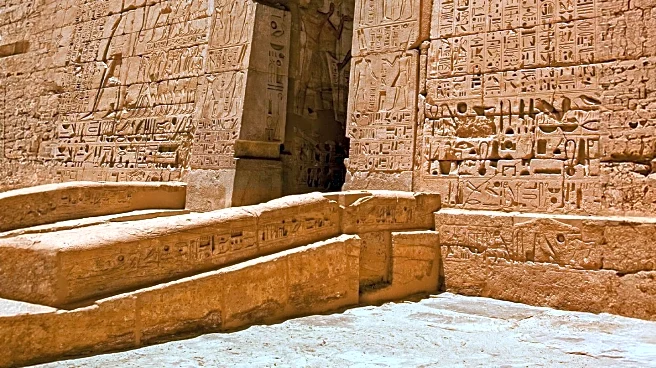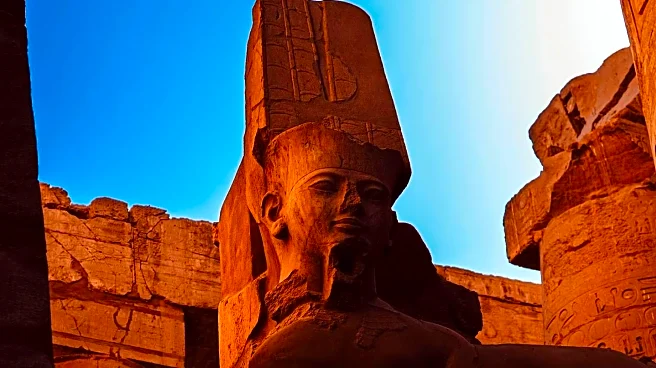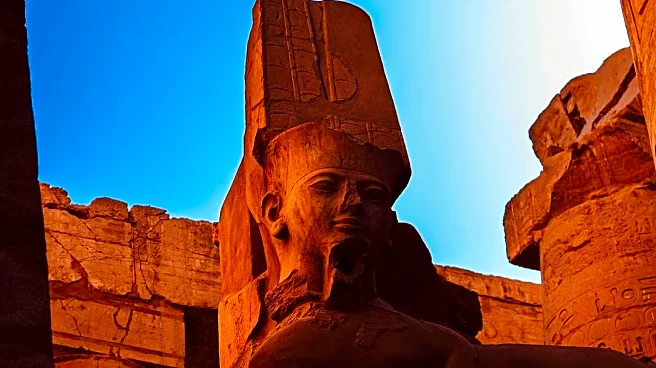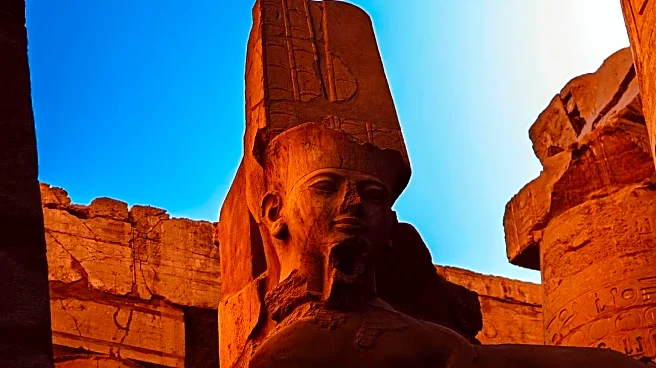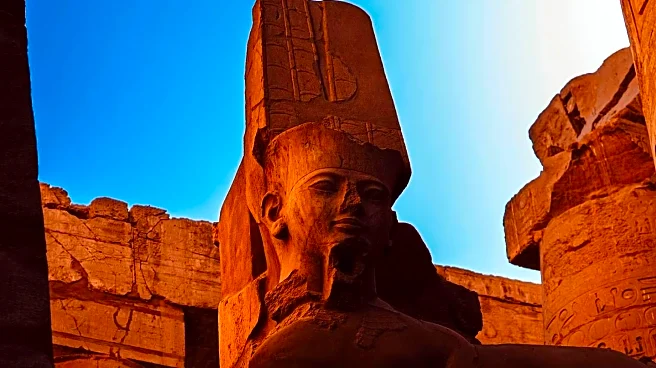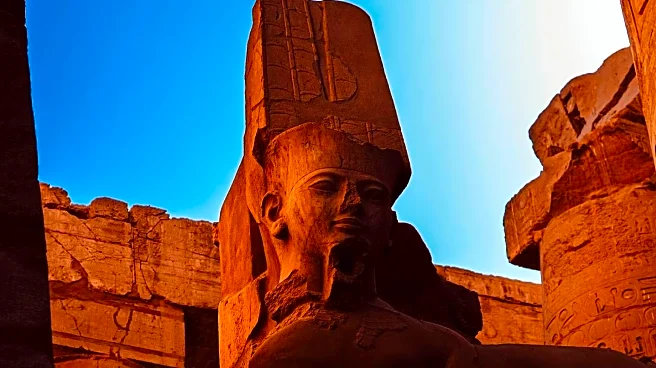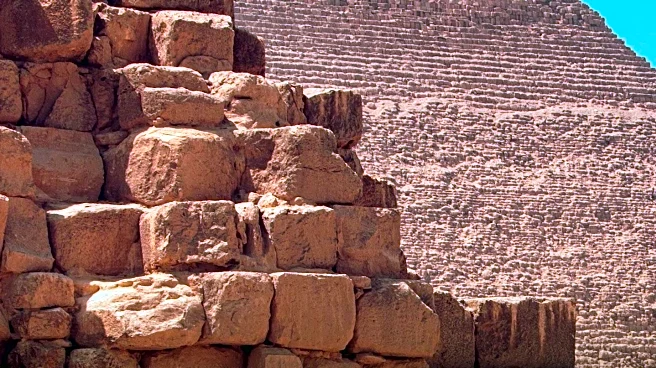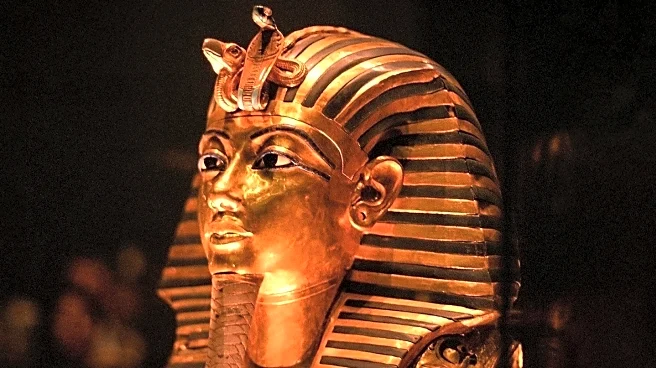What is the story about?
What's Happening?
Egypt has reopened the tomb of Pharaoh Amenhotep III in the Valley of the Kings after more than 20 years of restoration. The tomb, known as WV22, is one of the largest and most richly decorated in the area, reflecting the height of Egypt's imperial and artistic power during Amenhotep III's reign from 1390 to 1350 BCE. The restoration was led by a Japanese-funded mission in collaboration with UNESCO and Egypt's Supreme Council of Antiquities, involving over 260 specialists. The tomb's wall paintings, considered among the most exquisite of the Eighteenth Dynasty, have been preserved using non-invasive imaging technologies. The reopening is part of Egypt's broader strategy to revitalize heritage tourism, which contributes significantly to the country's GDP.
Why It's Important?
The reopening of Amenhotep III's tomb is significant for Egypt's tourism sector, which accounts for nearly 12% of the country's GDP. By spotlighting lesser-known archaeological sites, Egypt aims to diversify tourist interest and distribute foot traffic more sustainably. This initiative supports the country's strategy to balance conservation with economic development, offering travelers a more immersive experience of Egypt's ancient legacy. The project also highlights the importance of international collaboration in preserving cultural heritage, with UNESCO and Japan playing key roles in the restoration efforts.
What's Next?
Egypt's focus on heritage tourism is expected to continue, with initiatives like the Grand Egyptian Museum in Giza complementing the reopening of sites like Amenhotep III's tomb. Authorities may further promote off-the-beaten-path archaeological treasures to attract diverse tourist demographics and relieve pressure on more popular sites. The success of these projects could encourage similar conservation efforts in other regions, fostering global interest in Egypt's rich cultural history.
Beyond the Headlines
The reopening of Amenhotep III's tomb not only enhances Egypt's tourism appeal but also underscores the ethical responsibility of preserving historical sites. The project serves as a model for integrated conservation, conducted to the highest international standards. It also raises awareness about the challenges of maintaining ancient structures, such as structural instability and moisture damage, and the innovative solutions employed to address these issues.
AI Generated Content
Do you find this article useful?
